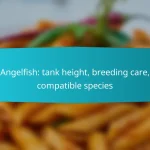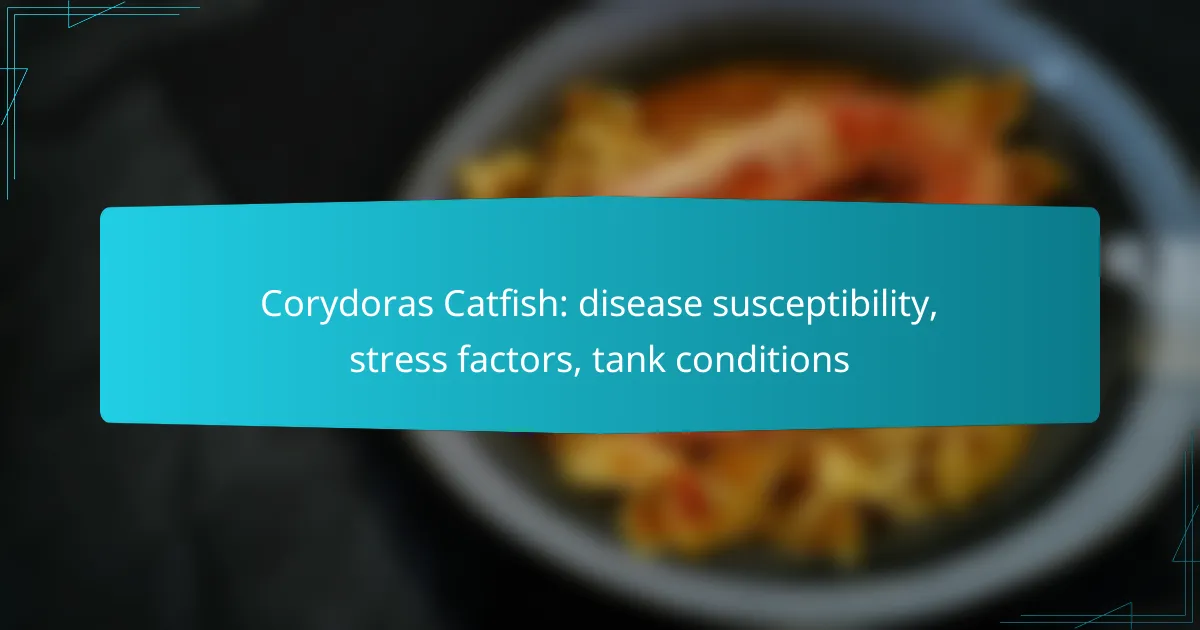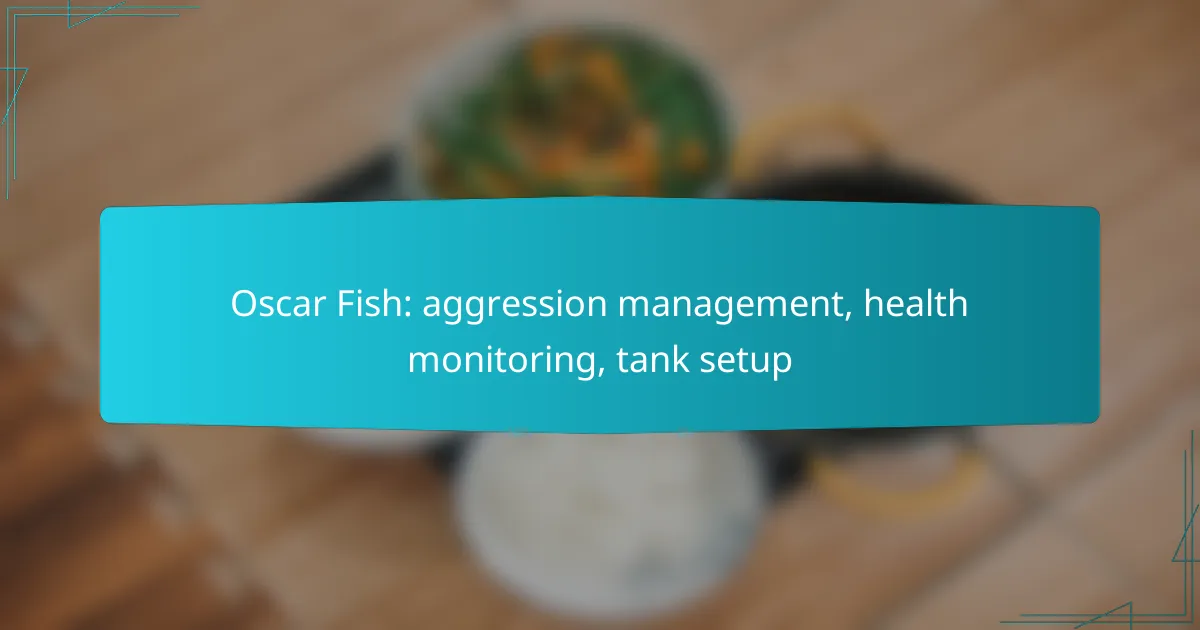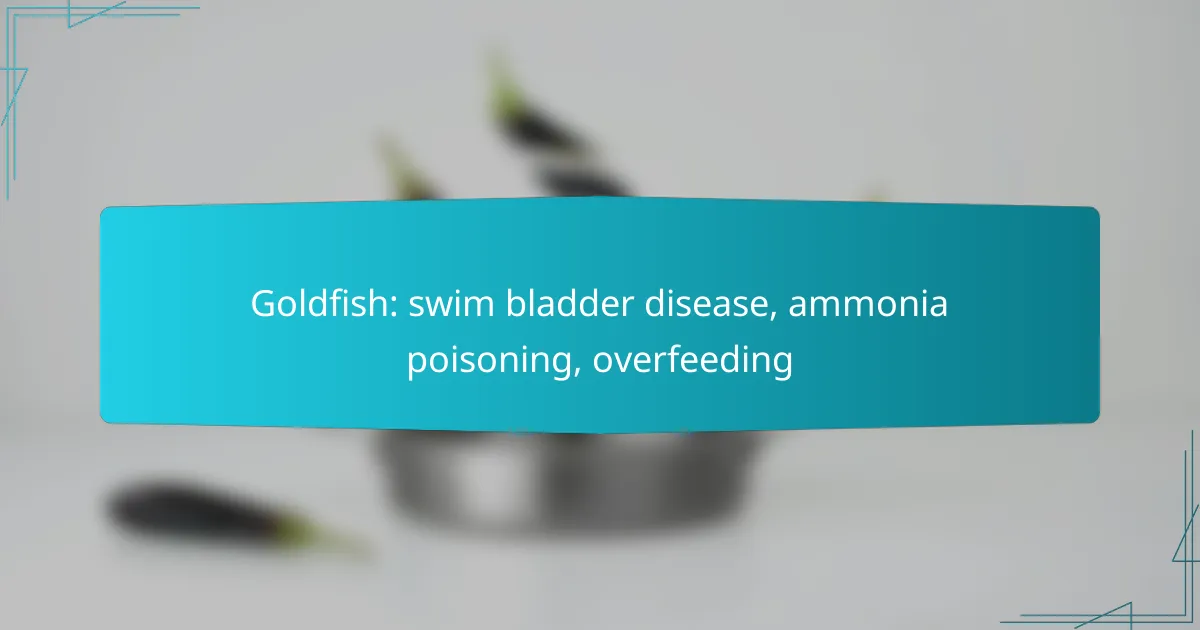Corydoras Catfish are popular aquarium inhabitants known for their peaceful nature, but they are susceptible to various diseases influenced by their environment. Maintaining optimal tank conditions, such as stable water parameters and appropriate tank size, is crucial for reducing stress and enhancing their overall health. Additionally, understanding common stress factors can help aquarists create a more suitable habitat, ultimately promoting the longevity and well-being of these charming fish.

How to improve tank conditions for Corydoras Catfish?
Improving tank conditions for Corydoras Catfish involves maintaining optimal water parameters, ensuring adequate tank size, and providing suitable substrate. These factors contribute significantly to the health and well-being of these fish, reducing stress and disease susceptibility.
Optimal water temperature
The ideal water temperature for Corydoras Catfish ranges from 22°C to 28°C (72°F to 82°F). Keeping the water within this range promotes their activity and overall health. Sudden temperature fluctuations can lead to stress, so use a reliable heater and thermometer to maintain stability.
Regularly check the temperature, especially during seasonal changes, to ensure it remains consistent. Avoid temperatures that exceed 30°C (86°F) as this can be detrimental to their health.
Water pH levels
Corydoras Catfish thrive in slightly acidic to neutral pH levels, ideally between 6.0 and 7.5. Maintaining this pH range helps prevent stress and encourages natural behaviors. Test the water regularly using pH strips or a digital meter to ensure stability.
Be cautious with drastic pH changes, as they can lead to health issues. If adjustments are necessary, do so gradually to avoid shocking the fish.
Adequate tank size
A minimum tank size of 75 liters (20 gallons) is recommended for a small group of Corydoras Catfish. Larger tanks provide more stable water conditions and ample swimming space. Overcrowding can lead to stress and increased waste, which can harm their health.
Consider the number of fish and their social nature; keeping them in groups of at least five helps reduce stress and encourages natural schooling behavior.
Filtration requirements
Effective filtration is crucial for maintaining clean water and reducing harmful toxins. A filter rated for at least double the tank volume per hour is ideal, ensuring adequate water circulation without creating strong currents that can stress the fish.
Regularly clean the filter and replace media as needed, but avoid over-cleaning, as beneficial bacteria can be disrupted. Use a sponge filter or a gentle power filter to provide a balance of filtration and water movement.
Substrate preferences
Corydoras Catfish prefer soft substrates, such as sand or fine gravel, which are gentle on their sensitive barbels. A soft substrate allows them to forage naturally without injury. Avoid sharp or rough materials that could harm their delicate bodies.
Consider adding hiding spots and plants to create a comfortable environment. This setup not only enhances their habitat but also reduces stress by providing shelter and security.

What are common diseases affecting Corydoras Catfish?
Corydoras Catfish are susceptible to several diseases that can impact their health and longevity. Understanding these common ailments can help aquarists take preventive measures and respond effectively when issues arise.
Ich (Ichthyophthirius multifiliis)
Ich, caused by the parasite Ichthyophthirius multifiliis, is one of the most prevalent diseases in freshwater fish, including Corydoras. Symptoms include white spots on the skin and gills, increased scratching against surfaces, and lethargy.
To treat Ich, raising the water temperature gradually can speed up the life cycle of the parasite, making it more susceptible to treatment. Additionally, using medications specifically designed for Ich can help eliminate the parasite from the tank.
Fin rot
Fin rot is a bacterial infection that manifests as frayed or disintegrating fins, often due to poor water quality or stress. Corydoras with fin rot may display signs of discomfort and reduced activity.
Maintaining clean water conditions is crucial for preventing fin rot. Regular water changes and ensuring proper filtration can help mitigate the risk. If fin rot occurs, antibiotic treatments can be effective, but it’s essential to address the underlying water quality issues.
Columnaris disease
Columnaris disease, caused by the bacterium Flavobacterium columnare, leads to lesions and a cotton-like appearance on the skin and fins of Corydoras. This disease often arises in stressed fish or those kept in poor water conditions.
To treat Columnaris, improving water quality and reducing stressors is vital. Medications containing antibiotics can help, but prevention through proper tank maintenance is the best approach.
Swim bladder disease
Swim bladder disease affects the buoyancy of Corydoras, causing them to float uncontrollably or struggle to maintain their position in the water. This condition can result from overfeeding, poor water quality, or injury.
To prevent swim bladder disease, feed Corydoras a balanced diet in appropriate amounts and maintain optimal water conditions. If symptoms appear, fasting the fish for a few days and then offering high-quality food can help restore normal function.
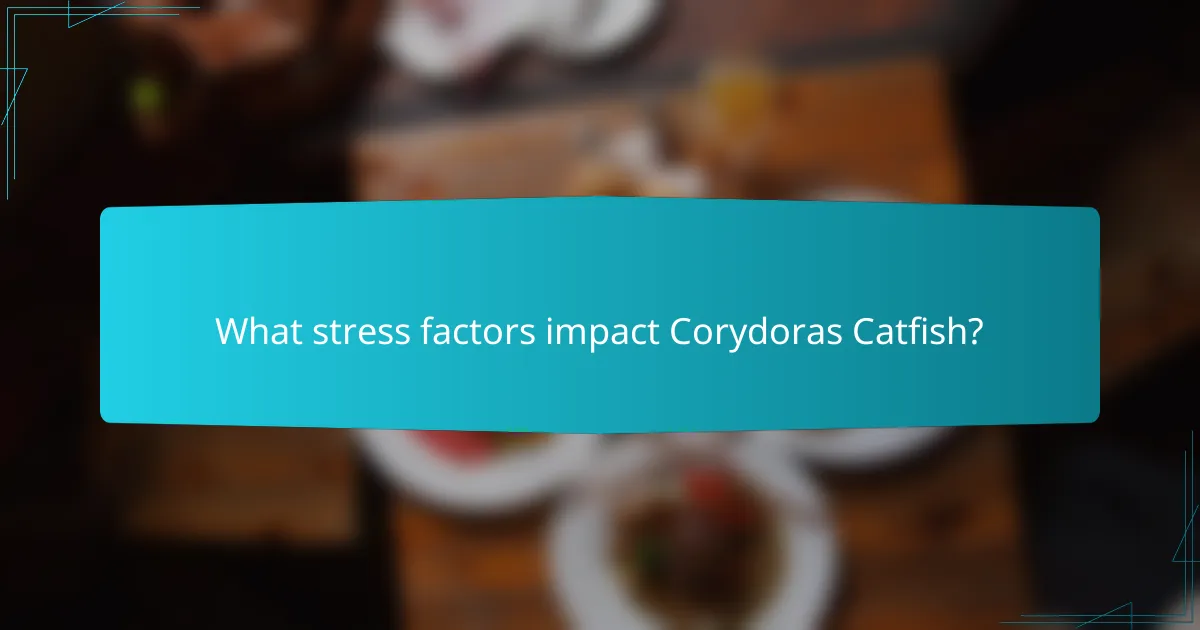
What stress factors impact Corydoras Catfish?
Corydoras Catfish are sensitive to various stress factors that can affect their health and well-being. Key stressors include water quality fluctuations, tank mate compatibility, overcrowding, and environmental changes, all of which can lead to disease susceptibility and behavioral issues.
Water quality fluctuations
Maintaining stable water quality is crucial for Corydoras Catfish. Sudden changes in parameters such as pH, ammonia, nitrite, and nitrate levels can cause significant stress, leading to health problems. Regular testing and gradual adjustments are essential to keep the water conditions within the ideal range, typically a pH of 6.0 to 7.5 and low ammonia and nitrite levels.
To minimize fluctuations, perform regular water changes of about 10-20% weekly and ensure proper filtration. Using a reliable water conditioner can also help in managing harmful substances.
Tank mate compatibility
Choosing compatible tank mates is vital for the well-being of Corydoras Catfish. They thrive in peaceful environments and can become stressed when housed with aggressive or overly active species. Ideal companions include other peaceful fish like tetras and rasboras, which share similar water requirements.
Before adding new fish, research their behavior and compatibility with Corydoras. Avoid species known for fin nipping or territorial aggression to prevent stress and potential injury.
Overcrowding issues
Overcrowding can lead to increased competition for resources and heightened stress levels among Corydoras Catfish. A general guideline is to provide at least 10 gallons of water per adult Corydoras, allowing ample space for swimming and hiding. Overcrowded tanks can also exacerbate water quality issues.
Monitor the number of fish in your aquarium and consider the tank size and filtration capacity. If you notice signs of stress, such as hiding or reduced activity, it may be time to reduce the population or upgrade to a larger tank.
Environmental changes
Corydoras Catfish are sensitive to environmental changes, including temperature shifts and alterations in tank decor. Rapid changes in temperature should be avoided, with a stable range of 22-28°C (72-82°F) being ideal. Sudden rearrangements can disrupt their comfort and familiarity.
To minimize stress, acclimate new fish slowly and introduce changes gradually. Maintain a consistent routine for feeding and tank maintenance to help your Corydoras feel secure in their environment.

How to select compatible tank mates for Corydoras Catfish?
Selecting compatible tank mates for Corydoras Catfish involves choosing species that are peaceful, of similar size, and contribute positively to community dynamics. This ensures a harmonious environment that reduces stress and promotes the health of all fish in the tank.
Peaceful species
Corydoras Catfish thrive in peaceful environments, making it essential to select tank mates that share this temperament. Ideal companions include species like tetras, guppies, and rasboras, which are known for their non-aggressive behavior. Avoid aggressive fish, such as cichlids or larger barbs, as they can stress or harm the catfish.
Additionally, consider the activity level of potential tank mates. Fish that are too boisterous may disturb the calm nature of Corydoras, so look for species that swim gently and do not compete aggressively for food.
Similar size recommendations
Choosing tank mates of similar size is crucial to prevent bullying and ensure that all fish can coexist peacefully. Corydoras Catfish typically grow to about 2-4 inches in length, so look for species that fall within this size range. Small fish like neon tetras or endler’s livebearers make great companions.
Avoid larger fish that might see Corydoras as prey or smaller fish that could be easily intimidated. Keeping a balanced size distribution helps maintain a stable community tank.
Community tank dynamics
Understanding community tank dynamics is key to selecting appropriate tank mates for Corydoras Catfish. These catfish prefer to be in groups, so it’s best to keep them in schools of at least five or six. This not only reduces stress but also enhances their natural behavior.
When adding other species, consider their social structure and compatibility with Corydoras. Fish that prefer the upper levels of the tank, like certain tetras, can coexist well with bottom-dwelling Corydoras. Ensure that all species have enough space and hiding spots to minimize territorial disputes and promote a peaceful environment.





